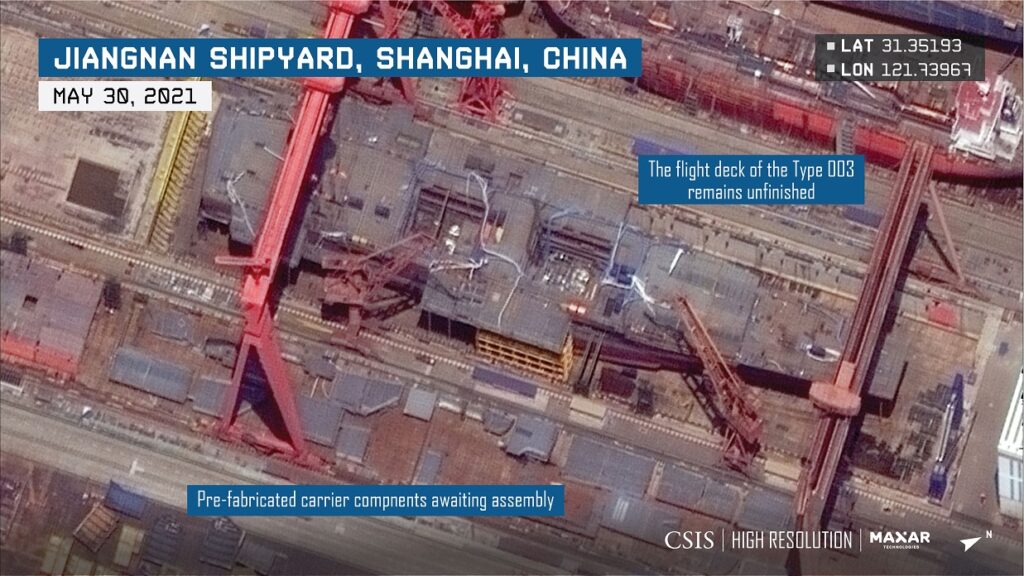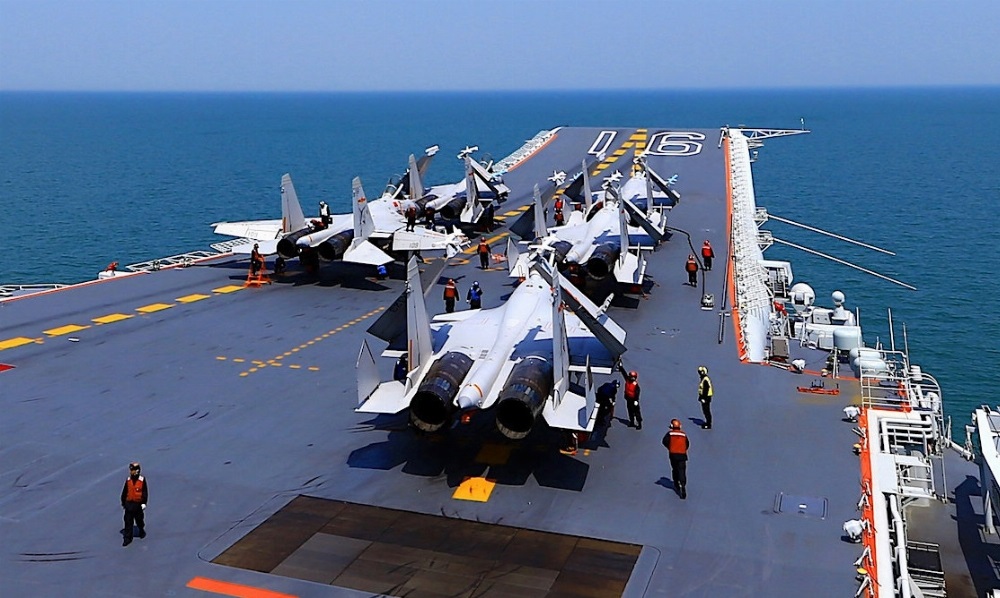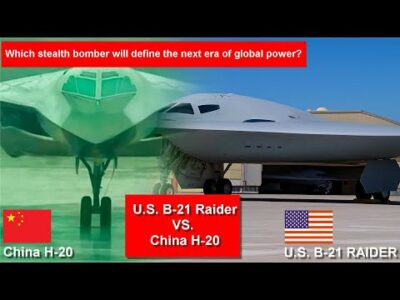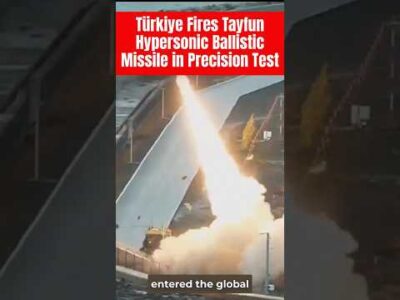Undoubtedly, aircraft carriers are the most effective power projection weapons developed in the last 80 years. A single Carrier strike group possesses sufficient firepower to destroy an entire country’s Navy. However, the relevance of aircraft carriers has grown dramatically in the twenty-first century as maritime activities, including seaborne commerce, oil and gas exploration, and military activities, have increased. Additionally, aircraft carriers act as a significant deterrence against rogue states disrupting global commerce routes and sea lanes.
As the world’s second-largest economy, with over 60% of trade conducted by maritime routes, and as a rival to the United States for global dominance, China desires a powerful blue-water navy led by numerous aircraft carriers. China presently has two aircraft carriers, while a third is under development and operational by 2022, despite the COVID-19 pandemic’s consequences. The rapid pace of work on carrier 003 at Shanghai’s Jiangnan Shipyard is fundamental in advances in Chinese carrier evolution. As of today, the Chinese Navy’s first CATOBAR carrier will be the Type 003.
General Features of the aircraft carrier
Unlike the first two aircraft carriers, Type 003 was planned and produced in-house by Chinese engineers at the Shanghai-based Jiangnan Shipyard. Moreover, Type 003 will be significantly more extensive and more advanced technologically than primary carriers. For example, China’s third aircraft carrier, the Liaoning, will be substantially larger than its predecessors, the Shandong, at 304.5 meters in length. Along with being larger than its predecessors, the Type 003 is expected to include a flat-top flight deck equipped with a “catapult aided takeoff but arrested recovery” (CATOBAR) system.
It is nearly the same size as the US navy’s Ford Class carriers, with a displacement of 90,000 tons. The aircraft carrier of Type 003 will have an operational range of 10,000 nautical miles without refueling. That is more than double the size and range of the Liaoning and Shandong aircraft carriers, which have a combined displacement of 45,000 tons and a range of 4000 nautical miles. The Type 003 aircraft carrier will carry 2700 crew personnel and an 85 marine solid detachment to conduct search and rescue missions.
Unlike the US aircraft carriers propelled by nuclear energy, the Type 003 carrier will be propelled by an integrated electric power and propulsion system comprised of two gas turbine generators and four diesel-electric generators. They will generate about 150 Megawatts of electricity when combined. The Type 003 aircraft carriers will be equipped with four shaft propellers, enabling them to reach a top speed of 30 knots and a cruise speed of 28 knots. However, the Chinese Navy’s Type 004 aircraft carrier, now under development, will be powered by a nuclear reactor. Nuclear-powered aircraft carriers outperform conventionally powered counterparts in terms of efficiency, durability, and range.

Much More Airpower Capacity
The Chinese Navy’s initial two aircraft carriers, the Liaoning and the Shandong, have a small capacity for aircraft. The Liaoning aircraft carrier has a maximum carrying capacity of 26 planes and is primarily utilized for training. In comparison, the Shandong is capable of transporting forty fighter aircraft. However, due to the lack of an electromagnetic catapult launch technology, Shandong can only launch J15 fighters with a restricted payload capacity. That is why both of these aircraft carriers are equipped with helicopter-borne early warning radar systems rather than fixed-wing AWACS.
However, the Type 003 carrier will transport 84 fighter and airborne early warning aircraft. In addition, it will house J15 aircraft with a total payload capacity of four and the newly designed fifth-generation J31 stealth fighters with a payload capacity of four. Shenyang’s J31 is a twin-engine carrier-based fifth-generation fighter aircraft on a par with the US Air Force’s F35. Shenyang Aircraft Corporation has been developing the twin-engine FC-31 as a smaller, lighter, and potentially less expensive counterpart to the Chengdu J-20, China’s first and only stealth fighter. The PLAN has reportedly been eyeing the FC-31 as a potential carrier fighter. The arrival of the type in Wuhan is the most unambiguous indication yet that the rumors are accurate.

Type 003 will be configured similarly to the Shandong with two starboard-side aircraft elevators. However, the elevators of Type 003 are believed to be larger, capable of simultaneously lifting two aircraft. For instance, France’s Charles de Gaulle has two elevators, whereas the United States’ Gerald R. Ford-class carriers have three elevators capable of simultaneously lifting two planes.
Sensors
The Type 003 aircraft carrier will be outfitted with dual-band active electronically scanned array radar systems consisting of four S-band dragon eye type 346 radars and four smaller X-band AESA radar panels. These radars will be positioned on the island’s top to provide more coverage, with a detection range of 400 kilometers for targets with a 1-meter square radar cross-section. Additionally, Type 003 will be equipped with several towed array sonars to detect and guard against submarines during anti-submarine warfare.
Layered Air Defense Network
The Type 003 aircraft carrier will be outfitted with a layered defense network of the long, medium, and short-range air defense weapons to defend itself against incoming missiles or cruise missiles. It will be armed with numerous VLS HQ-9 air defense systems to protect along and medium range. Additionally, the type 730 Close-in weapons system can fire up to 4200 rounds per minute at oncoming missiles.
Type 003’s command, control, and battle management systems are identical to those found aboard the United States Navy’s Ford-class aircraft carriers. For nearly a decade, Chinese engineers gathered extensive knowledge about the integrated command and control system and have built a duplicate of the command system used on US carriers.
Conclusion
Liaoning and Shandong will almost certainly continue to operate their aging J-15s, but Type 003 could be equipped with a mix of J-15s, FC-31s, and KJ-600s in addition to the standard helicopters. When the Type 003 is operational, it will be a formidable addition to China’s Navy, allowing it to project power more effectively into the Indian and Pacific Oceans. Additionally, the Chinese Navy’s capability will be significantly enhanced by the Type 003 aircraft carrier’s tremendous firepower and capacity to operate at long ranges.
Check out Naval Library App to find out more about the specifications of the Chinese aircraft carriers.

















Comments